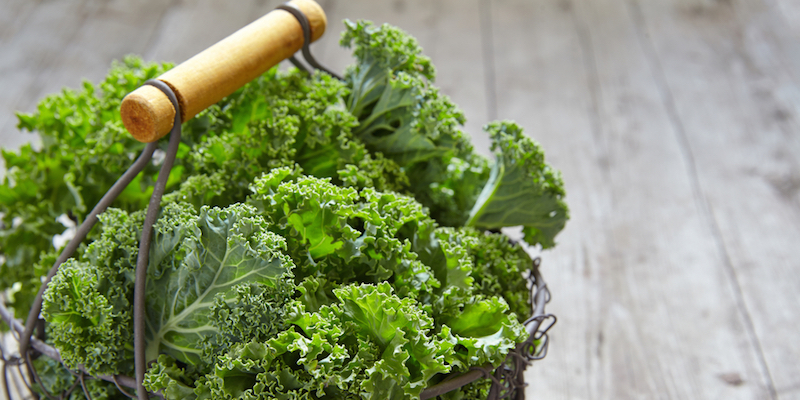The Health Benefits of Kale
The gorgeously green leaves of the kale plant provide an earthy flavor and more nutritional value for fewer calories than almost any other food available. There are several varieties of kale; these include curly kale, ornamental kale, and dinosaur kale, all of which differ in taste, texture, and appearance. In this post we look at the health benefits that Kale offers and how to make the best of it in your diet.
Nutritional Profile
Given its incredibly low calorie content (an average of 33 calories), kale is among the most nutrient dense foods in existence. Eating more kale is a great way to dramatically increase the total nutrient content of your diet. Kale contains very little fat, but a large portion of the fat in it is the omega-3 fatty acid called alpha linolenic acid. A single cup of raw kale also contains Vitamin A, K, C, B6, Manganese, Calcium, Copper, Potassium, Magnesium, B1, B2, B3, Iron and Phosphorous.
Cholesterol-lowering
Steamed kale – the fibre-related components in kale do a better job of binding together with bile acids in your digestive tract when they’ve been steamed. When this binding process takes place, it is easier for bile acids to be secreted, resulting in lower cholesterol levels.
Anti-cancer
Like most of its fellow cruciferous vegetables, kale has been studied more extensively in relationship to cancer than any other health condition. Kale’s cancer preventive benefits have been clearly linked to its unusual concentration of two types of antioxidants, namely, carotenoids and flavonoids.
Brain Health
Rich in flavonoids, kale may reduce the risk of stroke. It also contains omega-3 fatty acids which are important for brain memory, performance, and behavioural function.
Vitamin C
Kale is extremely high in vitamin C, an antioxidant that has many important roles in the body. A single cup of raw kale actually contains more vitamin C than an orange.
Vitamin K
Kale is one of the best sources of vitamin K. A single raw cup of kale contains almost 7 times the recommended daily amount. Vitamin K helps prevent heart disease, is involved in blood clotting and osteoporosis.
Selecting and Storage
- Look for kale with firm, deeply coloured leave and moist, hardy stems. Leave should look fresh, be unwilted and free from signs of browning, yellowing, and small holes.
- Choose those with small-sized leaves as these will be more tender and have a more mild flavour than those with larger leaves.
- Kale should be kept in a cool environment since warm temperatures will cause it to wilt and will negatively affect its flavour.
- To store, place kale in a plastic storage bag removing as much of the air from the bag as possible. In the fridge, it’ll keep for 5 days. The longer it is stored, the more bitter its flavour becomes. Don’t wash kale before storing because exposure to water encourages spoilage.
World Health Organisation (WHO) Recommendations
At a minimum, include cruciferous vegetables (most especially kale) as part of your diet 2-3 times per week, and make sure the serving size at least 1-½ cups. Kale is one of the healthiest vegetables around and one way to be sure to enjoy the maximum nutrition and flavour from kale is to cook it properly.
Getting more in your diet
Add it to your favourite smoothie or salad. Or perhaps as a snack and make kale chips. Simply drizzle some virgin olive oil or avocado oil on your kale, add some salt and then bake in an oven until dry.
